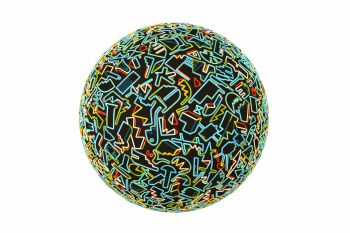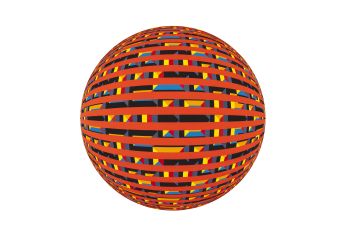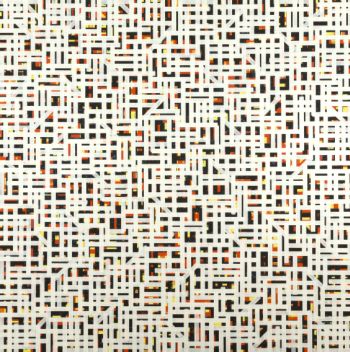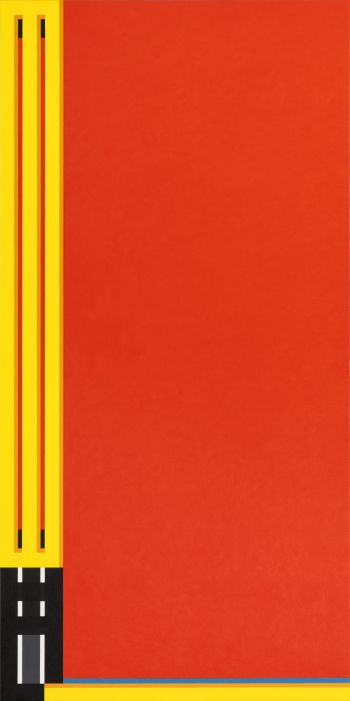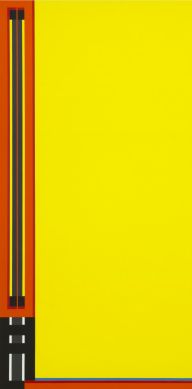|
Narozen 24.
února1956 v Rožňavě
1971 - 1975 Stredná škola umelecko-priemyselná, Košice (odbor grafika)
1976 - 1982 Vysoká škola výtvarných umení, Bratislava (odbor monumentálne maliarstvo)
1983 - 1987 ve svobodném povolání, profesionální výtvarník (tvorba v architektuře)
1987 - 1988 vedoucí galerijního oddělení, Banícke múzeum, Rožňava
1990 - 1991 pedagog, Stredná škola umelecko-priemyselná, Košice
1991 - 1995 odborný asistent (kresba), Katedra dizajnu, Strojnícka fakulta, TU Košice
1994 - 1996 restaurování fresek, Premonštrátske opátstvo, Jasov
1997 - 1999 ve svobodném povolání, profesionální výtvarník, tvorba v architektuře
1999 od založení Katedry výtvarných umení a intermédii,
vede Ateliér súčasného obrazu dosud
Na nově vzniklé Fakulte umení Technickej Univerzity, Košice
2004 docent v odboru volné umění, habilitovaný na VŠVU, Bratislava
2006 - 2012 vedoucí Katedry výtvarných umení a intermédii Fakulty umenia, TU Košice
2007 - laureát státní ceny „Munkácsy Mihály díj“ Budapešť (Maďarsko)
Žije a tvoří v Rožňavě a Košiciach.
Szentpéteryho jazyk geometrie
Tvorba popredného slovenského maliara Adama Szentpéteryho (nar. 1956) sa odohráva vo vizuálnom jazyku geometrie so silným maliarskym kódovaním. Línia, farba a plocha sú základnými stavebnými kameňmi jeho obrazového systému. V priebehu desaťročí Szentpétery vybudoval na poli geometrickej abstrakcie monolitný maliarsky program, ktorý je esenciou mentálnej aktivity, racionálnych postupov a protestantskej ekonómie formy. Po absolvovaní bratislavských štúdií (1976-82) sa vrátil do regiónu – do rodnej Rožňavy, kde žije a tvorí dodnes. Tu je nutné spomenúť aj jeho výrazné pedagogické pôsobenie – bol spoluzakladateľom Katedry výtvarných umení a intermédií na Fakulte umení TU v Košiciach, kde od roku 1999 vedie Ateliér súčasného obrazu.
Szentpétery tvorba sa vyvíja v niekoľkých okruhoch, či tematických skupinách. Tie však nenasledujú lineárne za sebou, naopak bežia paralelne vedľa seba, vzájomne sa prekrývajú, či neperiodicky vynárajú v neskoršom období v inej transformovanej podobe. Od prvých štylizovaných industriálnych krajín a zátiší (1978-89) vzniká proces kryštalizácie foriem a tvarov, nezávislých na predmetnej skutočnosti, definovanie autonómnej reči obrazovej geometrie. Prvým tematickým blokom sa u autora stávajú príbehy malých
„geometrizmov“, rozptýlených štruktúr imaginárnych prvkov a tvarov. Išlo o série oslobodených malých elementov a podivných fragmentov, heterogénne roztrúsených po obrazovej ploche (Levitujúce formy, 1989 - 96), dekonštruktívne kompozície v atonálnej zrážke plôch a línií (Dekonštrukcie, 1989 - 94). To viedlo k vytvoreniu jeho kľúčového motívu – obrazových štruktúr. Mnohovrstevného tkaniva, kde sa striedavo opakuje pravidelný algorytmus ťahov v troch základných smeroch. Podľa autora samotného „ horizontála symbolizuje materiálnu podstatu sveta, vertikála symbolizuje duchovnú sféru a diagonála ich prepojenie a pohyb“. Ide teda o elementárny rytmický vzorec, ktorý vytvára vnútorný obrazový priestor – „ integrovaný obvod“ maľby (Štruktúry, od 1988).
Druhý veľký okruh Szentpéteryho prác tvoria série malieb, kde hlavnú úlohu zohrávajú línie - horizontály a kolmice, na pozadí slávnostných žltých a červených monoplôch. Ide predovšetkým o symetrické rovnovážne kompozície, kde kolmice stoicky dopadajú na ustálenú hladinu horizontály (Horizonty, od 1994). Nasledujú príbehy nepokojných diagonál, čo ostro pretínajú obrazovú plochu a v rohoch vytvárajú optickú ilúziu priestoru (Posuny, od 1995). Ďalej vzniká cyklus prác, kde dochádza k zmnoženiu línií, k ich paralelnému priebehu cez obrazovú plochu. Vznikajú tak vodorovné členené polia, lineárne informačné prúdy, čo evokujú stiahnuté žalúzie cez „okno“ obrazu ( Monotónne prúdenia, od 1999). Podobne vyznievajú kompresie jedného priestoru na účet druhého, vybudovanie žiarivej „supestruny“ uprostred monochrómneho poľa (Stlačené priestory, od 2000), či premietanie rastra paralelných línií na modul spletitých štruktúr, čo vytvára dojem filtrovania dát a informácií, či ich vymazávanie (Geometrické šumy, od 2004). Následne autor redukuje svoj slovník na strohú konštrukciu pravého uhla, dobrodružné stretnutie vertikály s vodorovnou priamkou v rohu obrazu. V tejto hraničnej racionálnej sústave sa pravý uhol stáva univerzálnym princípom maľby a záväzným kódexom (Kompozície na hrane, od 2000). Tieto „vizuálne architektóny“, založené na oslave pravého uhla, predstavujú svojské znamenia usporiadaného systému a stavu harmónie.
V najnovšej sérii malieb pod strešným názvom Deformácie (od roku 2007), ktoré tvoria základ olomouckej prezentácie, Szentpétery prináša jednak zmenu formátu – nastupujú monumentálne kruhy – rondá, a jednak zmenu formátovania obrazového priestoru. Ide o “zakrivenie“ priestoru na ploche, o ilúziu 3D vydutosti, čo odkazuje na vstup nových technológií dneška (fotografická optika rybieho oka, počítačové modelovanie, digitálne manipulácie a pod.). Najnovšie maľby tak prezentujú vlastný vnútorný model sveta – vizuálny „dátový glóbus“, ktorý ukazuje narušenie prísnych karteziánskych súradníc a prebúranie sa do iného neeuklidovského priestoru, do rozšíreného mediálneho priestoru súčasnosti. Adam Szentpétery tak vytvára vlastnú „intelektuálnu esenciu“ maľby, osobitý kanál v neverbálnej komunikácií dneška. To ho zaraďuje k popredným maliarskym zjavom aj v širšom stredoeurópskom kultúrnom kontexte.
Vladimír Beskid
|
1956 born in Rožňava on 24th February
1971 - 1975 School of Applied Arts in Košice (Department of Graphic Arts)
1976 - 1982 Academy of Fine Arts and Design in Bratislava (Department of Monumental Painting)
1983 - 1987 freelance, professional artist (creation in architecture)
1987 - 1988 director of exhibitions, Town Gallery of Rožňava
1990 - 1991 teacher, High School of Applied Arts in Košice
1991 - 1995 Assistant Professor (drawing), Department of Design, Technical University of Košice
1994 - 1996 restoration of frescoes, the Premonstratensian Abbey in Jasov
1997 - 1999 freelance, professional artist (creation in architecture)
1999 since the establishment of the Department of Fine Arts and Intermedia he leads the
Studio of Contemporary Painting at the Faculty of Arts at the Technical University in Košice
2004 becomes prelector of fine art, habilitated at the Academy of Fine Arts and Design in Bratislava 2006 - 2012 head of Department of Fine Arts and Intermedia of the Technical University in Košice
2007 awarded “Munkácsy Mihály díj“ (i.e. state prize), Budapest (Hungary)
Currently lives and works in Rožňava and Košice (Slovakia).
Szentpétery's Language of Geometry
The creation of Adam Szentpétery (b. 1956) can be characterized by the language of visual geometry with a strong painting encryption. Line, color and space are the building blocks of the system in his paintings. Over decades, Szentpétery built a specific field of geometric abstraction in a monolithic program, which represents the essence of mental activity, rational procedures and orthodox economics of the form. After the completion of his studies in Bratislava (1976-82) he returned back to his hometown "Roznava", where he lives and works until today. It's important to mention that he co-founded the Department of Visual Arts and Intermedia at the Faculty of Fine Arts of the Technical University in Košice, where he leads the Studio of Contemporary Painting since 1999 until today.
Szentpétery's creation is evolving in several fields, or thematic groups. They do not follow a linear order but rather happen parallelly. They mutually overlap or transform from one into another. Since his stylized industrial landscapes and still lifes (painted in 1978-89), there was a long process of the definition of forms and shapes, independently from any material facts to the definition of his autonomous language in geometry. The first thematic segment in the author's creation are the "Geometrisms" - imaginary structures of elements and shapes. It is a series of freely floating small components or strange little fragments scattered across the heterogeneous area of the painting ("Levitating Forms", painted in 1989-96), deconstructive compositions in discordant collision of areas and lines ("Deconstructions", painted in 1989-94). This led to the creation of the author's key theme in his whole creation - the image structures. Multi-layered tissues, where a regular algorithm is repeatedly shifted in three basic directions. According to the author himself "The horizontality represent the essence of the material world, the verticality represent the spiritual realm and diagonality interconnects them." This rhythmical pattern thus creates the internal area of the painting itself - the "integrated circuit" of painting ("Structures", painted since 1988).
The other big segment of Szentpetery's work consists of a series of paintings in which the main characteristics are displayed by lines - horizontals and verticals, painted on large festive red and yellow backgrounds. Here all is based on symmetrically balanced compositions, wherein the normals stoically fall on a horizontal plateau ("Horizons", painted since 1994). Later interchanged by turbulent diagonals which sharply intersect the whole area of the painting and create an optical illusion at it's corners ("Shifts", painted since 1995). Further on, there is the series of works in which the number of lines are multiplicated, spaced out parallelly through the workspace of the painting. This lead to the creation of horizontally structured fields, linear streams of information, which resemble window blinds spread over the "window" of the painting ("Monotone Streams", painted since 1999). A similar feeling is evoked by the small series of compressed spaces which create "supercords" in the middle of monochrome fields ("Compressed spaces", painted since 2000), or the projection of parallel lines onto the module of tangled structures, which give the impression of data-filtering or on the contrary data-deletion ("Geometric Noise", painted since 2004). Subsequently, the author reduces his vocabulary on just simple constructions of right angles, based on moments when the vertical and a horizontal lines meet each other in the corner of the painting. In this rational system, the right angle becomes the universal principle of the whole painting ("Compositions on the Edge", painted since 2000). These "Visual Architectons" based on the ceremony of the right angle, recreate a special world of means of an arrangement or a state of harmony.
In his latest series of paintings called "Deformations" (painted since 2007), which form the basis of the exhibition in Olomouc, Szentpétery brings a slight change in the format - introducing new monumental circles - "rondas" which also change the displacement within the area of the painting. These "deformations" of spaces on surfaces create an illusion of 3D convexity, which refer to the entry of today's new technologies (fisheye photography in optics, computer modeling, digital manipulation and etc.). These latest paintings thus represent a specific internal model of the world - a visual "data globe" that depicts a violation of usual strict Cartesian coordinates and reentering onto another form of a non-Euclidean space, extending into the contemporary world of media. Adam Szentpétery thus recreated his own "intellectual essence" in painting, an individual channel in non-verbal communications of today. This brings him to a sole path on the list of the most important painter's in Central European cultural context.
|

